When I hear the word chili, I almost immediately think of Mexico. That is what I recently thought about chili oil as well until I used it in one of my dishes and was left amazed after eating it.
I decided to do some research about it and found out that this amazing ingredient actually originated in China. What a surprise!
However, that didn’t stop me from using it again and even from writing about it.
I found out that it is prepared by infusing chili peppers into vegetable oil and is mostly used as a dip alongside meat.
I decided to use it exactly like that, but unfortunately, I didn’t have any in my kitchen and my local grocery store was also out of stock.
However, I found out that there are some fantastic chili oil substitutes that work perfectly fine.
And I want to share them with you as well.
The Ultimate List Of 13 Best Chili Oil Substitutes
As promised, I provided you with the ultimate list of the 13 best alternatives for a chili oil that will certainly delight your dish and your taste buds. Let’s see what those alternatives are and how you can use them in the best way.
1. Cayenne Pepper
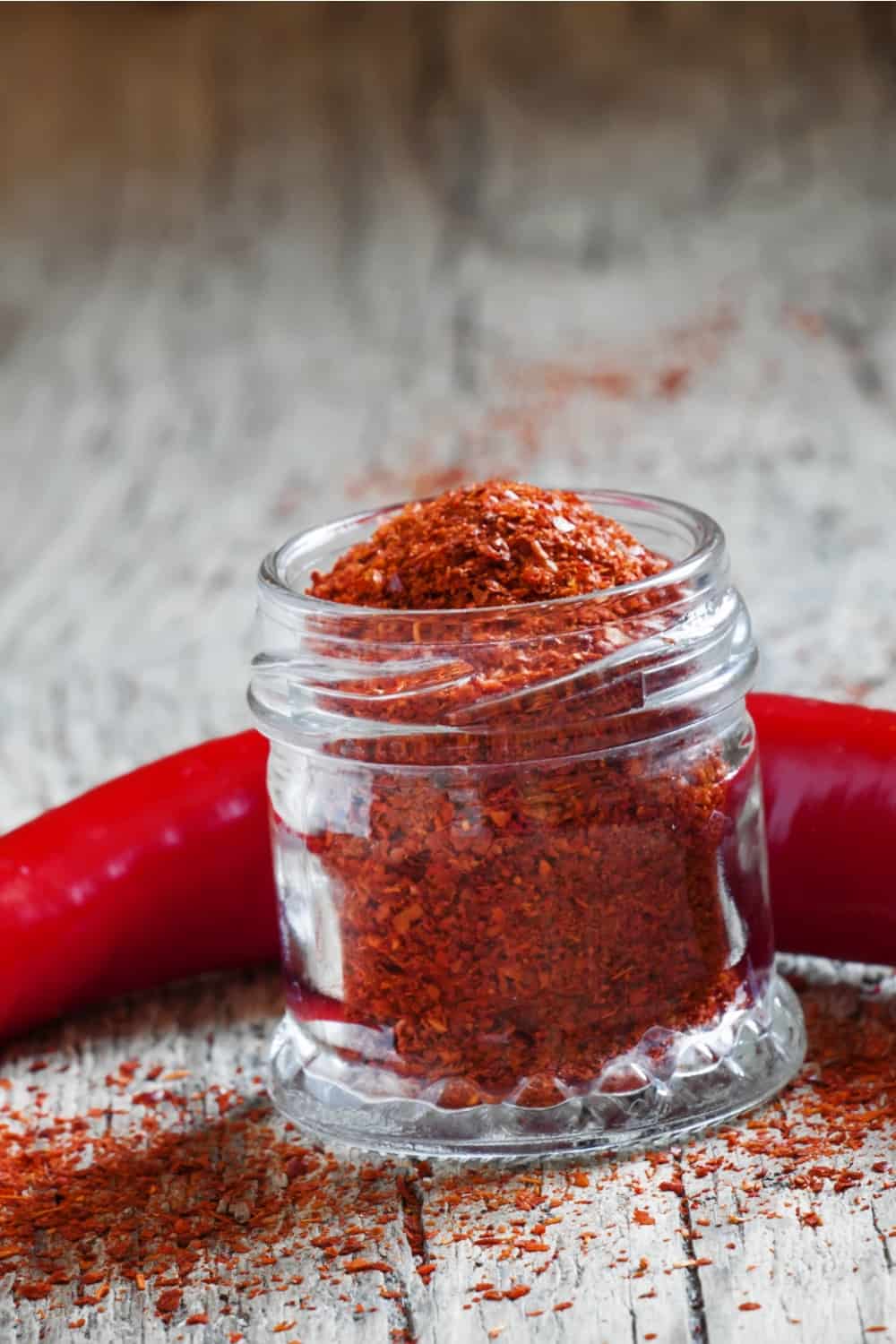
Cayenne pepper is definitely not the type of ingredient that first came to my mind because, well, cayenne pepper is a pepper, and chili oil is an oil. Completely different textures.
However, just like with everything in the cooking world, you have to experiment a little bit and you can accomplish almost anything. That is exactly the case here as well.
So, if you have some cayenne pepper, try to find a bit of peanut oil and mix these two ingredients. Use 2 tablespoons of peanut oil and 1 tablespoon of cayenne pepper.
With the combination of the spiciness level of cayenne pepper and the oily texture and consistency of peanut butter, you will create an ingredient that is worthy of replacing chili oil in almost any recipe.
2. Chili Garlic Oil
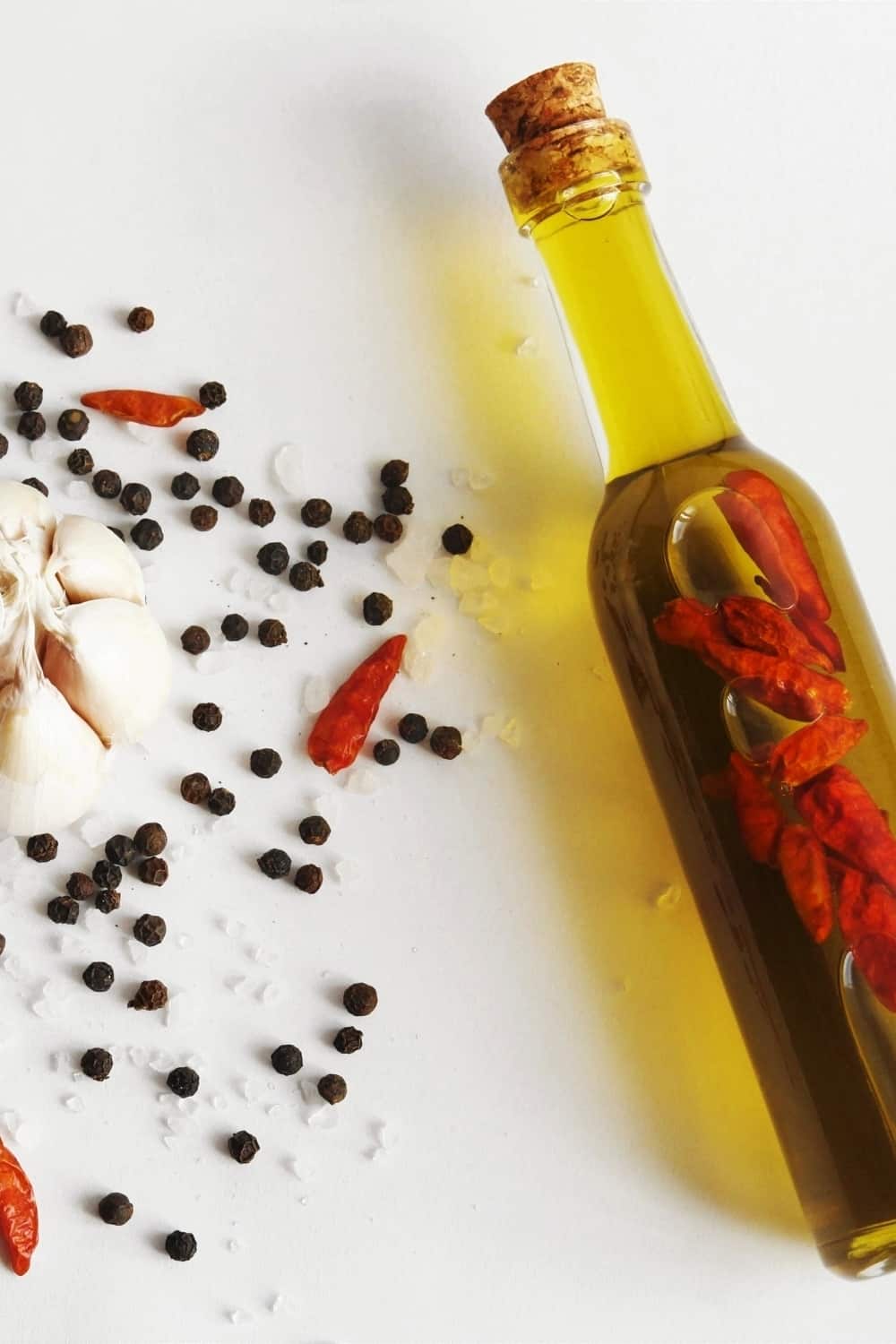
Chili garlic oil is not an ingredient that you can find easily at your local grocery store or supermarket.
However, if you have a kitchen and a few simple ingredients, the sky’s the limit and you can make yourself a perfect oil that will replace the one made from chili.
It takes only about 15 minutes to prepare and all you need is a few ingredients including chilies, garlic, vinegar, salt, and a bit of sugar.
Aside from those, you will also need some type of neutral oil like, perhaps, avocado oil.
But, that is up to you to decide. I used avocado oil because it is super healthy.
Now, all you have to do is to blend this mixture for about 10 minutes and stir-fry it properly until it turns into a red paste. Just make sure you don’t heat it too much because that will ruin the flavors of the ingredients.
After the mixture turns red, it is ready for all of your desired dishes.
See Also: 12 Best Chili Garlic Sauce Substitute Ideas For Any Dish
3. Gochujang

Gochujang, as you can already conclude from its name, also comes from Asia, more precisely from Korea.
It is in fact a Korean chili paste with specific sweet undertones, but it is spicy enough to properly substitute chili oil in your dish.
The only problem lies in the fact that Gochujang has a slightly different texture since it is thicker. If you don’t have a problem with that, you can freely go for it.
If that bothers you, you can mix it with a little bit of oil and adjust its texture the way you prefer.
4. Sichuan Sauce
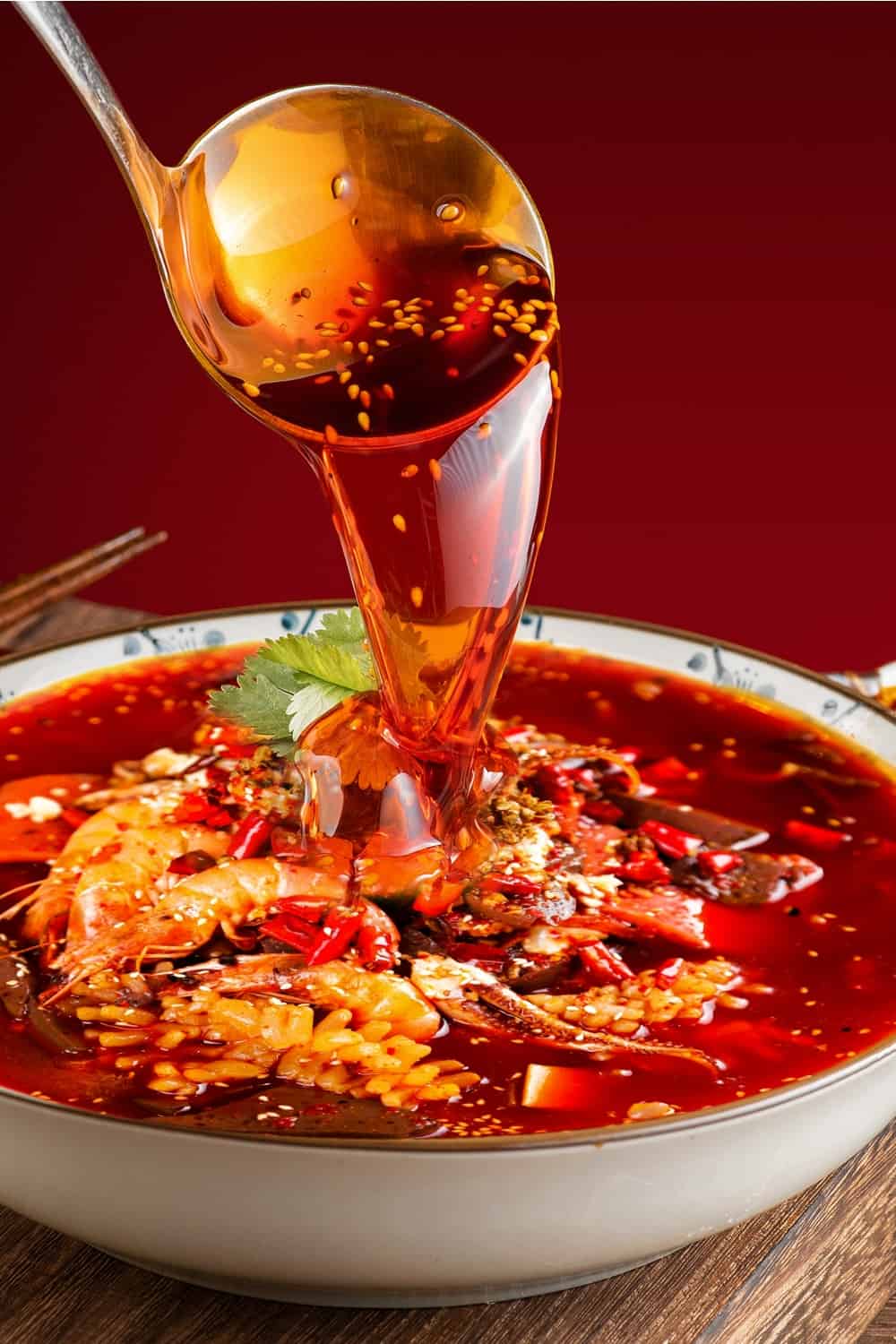
Sichuan sauce, originally known as Szechuan sauce, is a type of hot and spicy sauce that comes from China, more precisely from the Sichuan province that is located in southwest China.
I personally don’t think that it is an ideal substitute for chili oil, but it can serve as a decent one if you know how to incorporate it into your dish properly.
First, since one is an oil and the other is a sauce, it is obvious that these two ingredients don’t have the same texture, i.e. Sichuan sauce has a thicker texture.
Fortunately, that problem can be solved to some extent if you have the right ingredients on hand.
You just have to mix it with some type of neutral oil, like for example avocado oil or canola oil, and adjust the consistency accordingly.
The texture and consistency are solved, but what about the flavor profile?
I have to emphasize that the flavor profiles of these two ingredients are quite different since Sichuan sauce is quite spicy and more savory.
So, in order to adjust the flavor profile before you add it to your dish, you can add a bit of sugar and some type of vinegar to adjust the flavor.
5. Soy Sauce
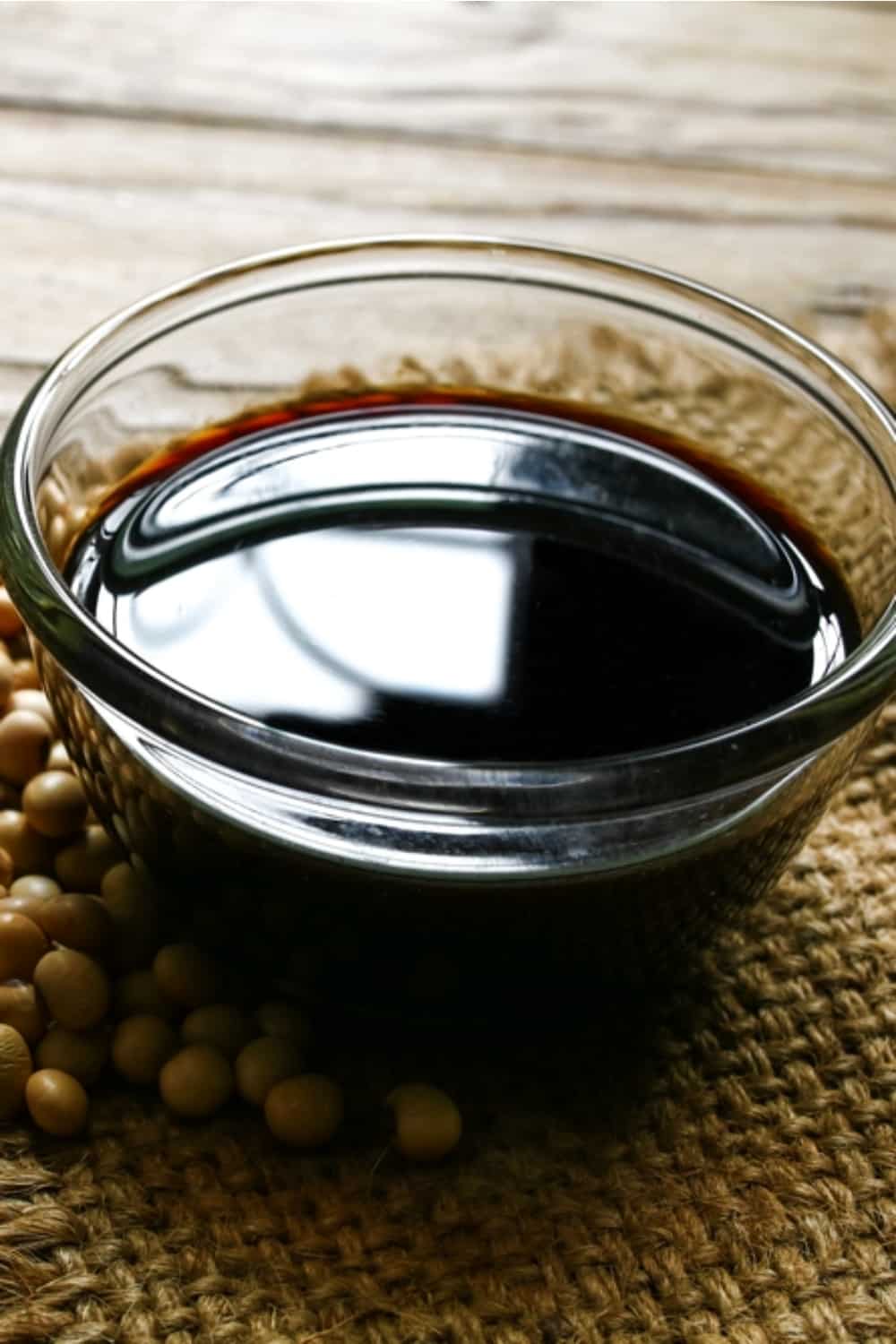
Well, this is kind of an obvious chili oil substitute since it is predominantly used in Asian cuisine and it has a similar texture too.
However, it is similar, not the same. And because of that, it is not a bad idea to adjust it a little bit more by adding some other ingredient.
The ingredient with which you can adjust the texture and consistency of soy sauce is some kind of neutral oil or oil with a relatively neutral taste, like sesame oil.
When it comes to adjusting the flavor profile and spiciness level, it is best to mix it with chili flakes or red pepper flakes that will give it the desired spiciness, as well as some other ingredients like vinegar, ginger, and garlic.
A bit of sugar won’t hurt it either.
6. Black Bean Sauce

And here is another type of sauce and this one also comes from China, more precisely from southern China.
As the name suggests, its main ingredients are salted fermented black beans turned into a sauce.
This sauce has a quite strong savory and salty flavor that needs some adjustments in order for it to be a good chili oil substitute.
The process of adjusting its flavor and texture is quite similar to the previous ones. You need to add a bit of neutral oil to give it an oily consistency.
When it comes to the flavor profile and spiciness level, it is good to add some spices like ginger and garlic, as well as red pepper flakes to give it that spicy touch.
If you want to use this sauce as an alternative, you can find it in most Asian stores, as well as in some supermarkets.
See Also: 14 Substitutes For Black Beans Bound To Elevate Any Dish
7. Sriracha

Regarding the similarity of ingredients, Sriracha comes very close to chili oil. Both of these ingredients contain chili peppers, garlic, vinegar, sugar, and salt.
Of course, this makes them quite similar in terms of the flavor profile. Aside from that, they both contain spicy chili peppers, so there is no need to adjust the level of spiciness of Sriracha.
However, Sriracha is a sauce, contrary to chili oil. So, some adjustments in terms of texture and consistency must be done.
In order to do that the right way, you will need to add your Sriracha to some type of neutral oil in a 1:1 ratio and then it will be ready for use in your dish.
Sriracha is quite an available and affordable sauce and you can find it in almost any grocery store or supermarket, and order it online of course. Aside from that sriracha does not go bad so easily if you store it peoprely, which is a huge plus for this condiment.
8. Chili Flakes
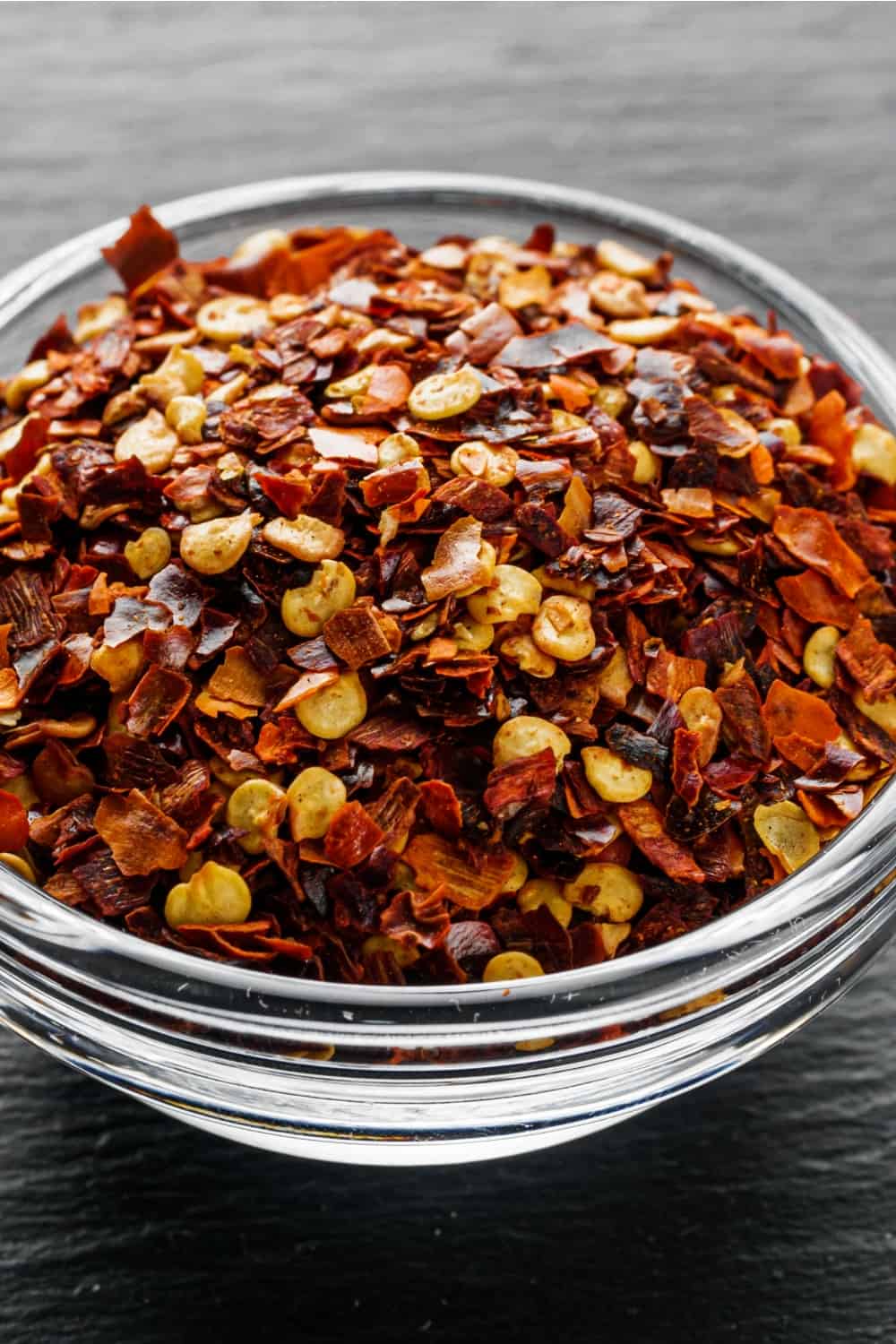
Chili flakes are dried and crushed pieces of chili peppers that are widely used for various dishes to give them that extra spicy touch that they possess.
Because they are one of the main ingredients in chili oil, they can be used as an alternative as well. They can be sprinkled over the dish because the flavor profiles and spiciness levels are similar.
But, if you want to adjust the texture and consistency, you will probably have to add some neutral oil.
It is best to use a 1:1 ratio here, but you can also adjust the ratio according to the desired level of spiciness.
So if you want more spicy ingredients, you won’t be adding too much oil. On the other hand, if a high level of spiciness is not desirable for you, it is best to add a little bit more oil.
9. Heat Chilis In Oil
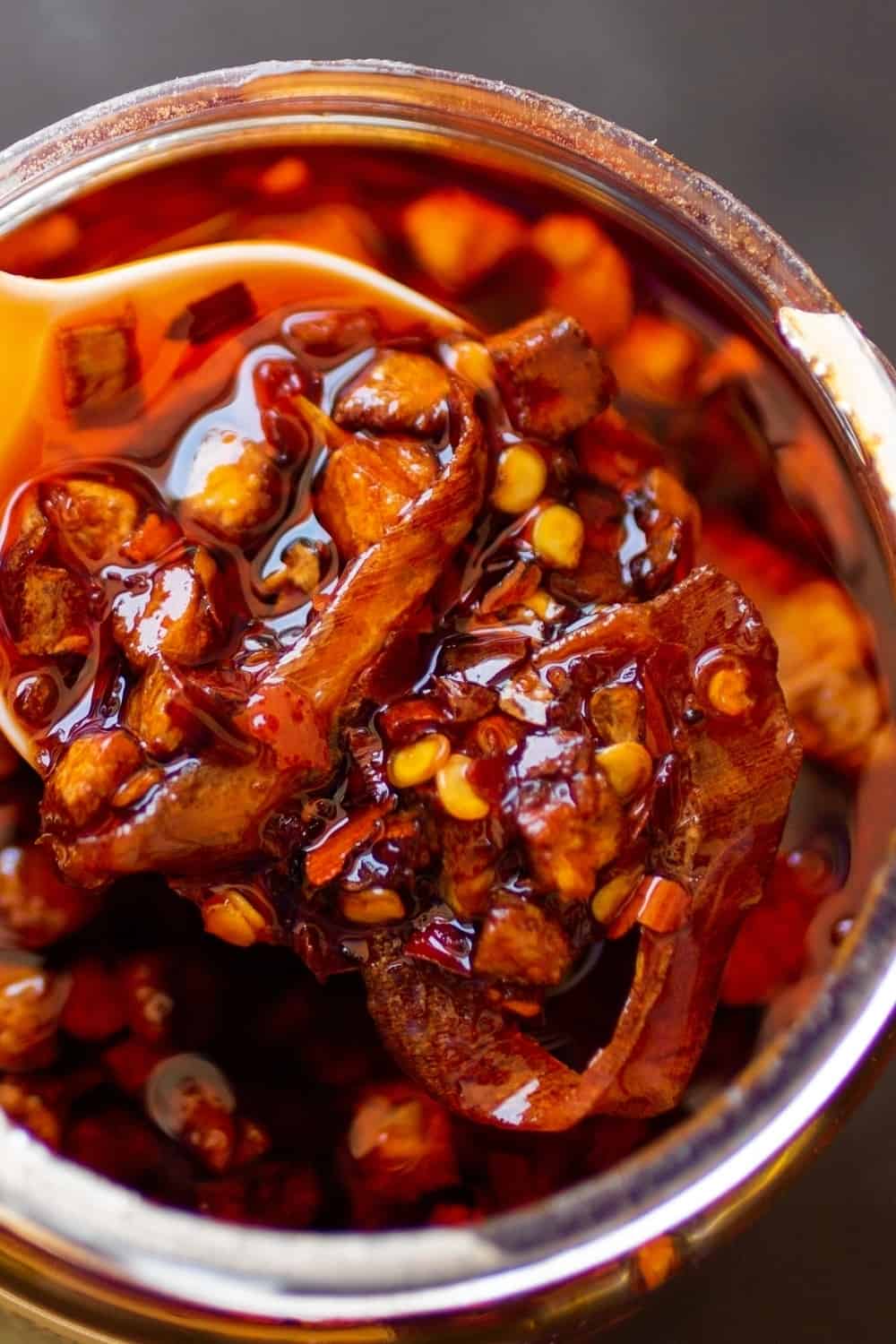
This one is quite similar to the previously described substitute. However, in this case, you are dealing with fresh chilies instead of dried and crushed pieces of chili peppers.
Namely, in this case, you also have to mix the oil and chili peppers. The process is quite simple.
All you need to do is to add a few fresh chilies, for example jalapenos, in oil and let it simmer for about 30 minutes.
After those 30 minutes, the oil will probably turn red and when it does that, it is perfectly ready to be used as a substitute.
One more note. If you are using oils like olive, avocado, or canola oil that have a higher boiling point, you can freely stir-fry the chilies for a few extra minutes which will make the flavors deeper and spicier as well.
10. Sweet Chili Sauce
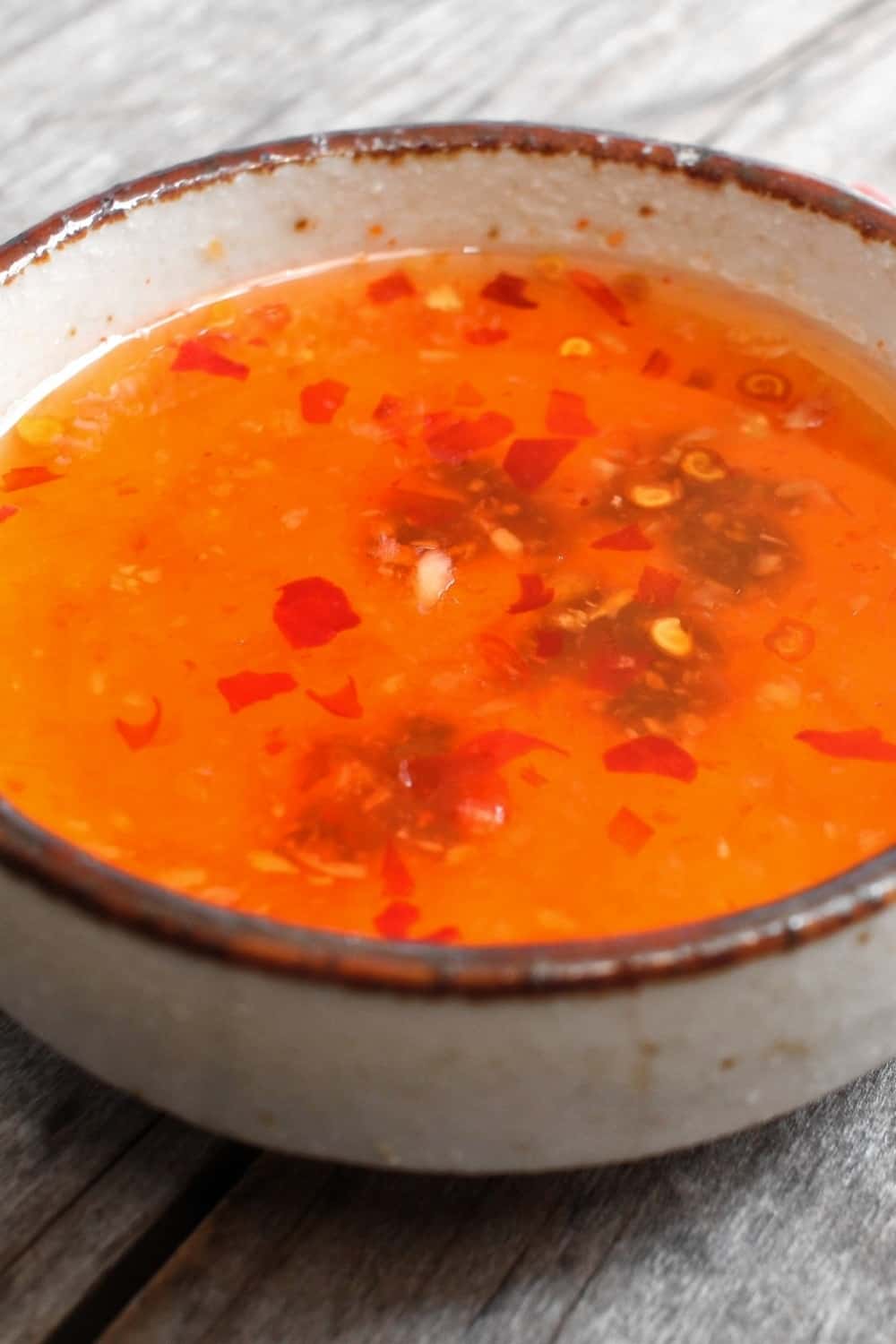
Sweet chili sauce is another amazing gift from the Asian culinary world. It comes from Southeast Asia and it is a very popular ingredient in Thai cuisine.
There are different applications of sweet chili sauce, like in making marinades and adding it to different types of dishes, but it is mostly used as a dipping sauce.
Since it is the perfect combination of spiciness, sweetness, and savory undertones, it can serve as a great alternative to chili oil.
The only difference is in its consistency, but you can solve that problem as well by diluting it with a bit of oil. My suggestion is to use olive oil, but you can also use any other type of vegetable oil.
Also, you can find this sauce in many grocery stores. You can also make your own homemade sweet chili sauce by just combining a few basic ingredients like red chili paste, vinegar, garlic, sugar, and lime.
If you want a healthier version, you can also use honey or brown rice syrup instead of sugar.
See Also: 9 Best Substitutes For Sweet Chili Sauce + DIY Recipe
11. Dried Chili Peppers
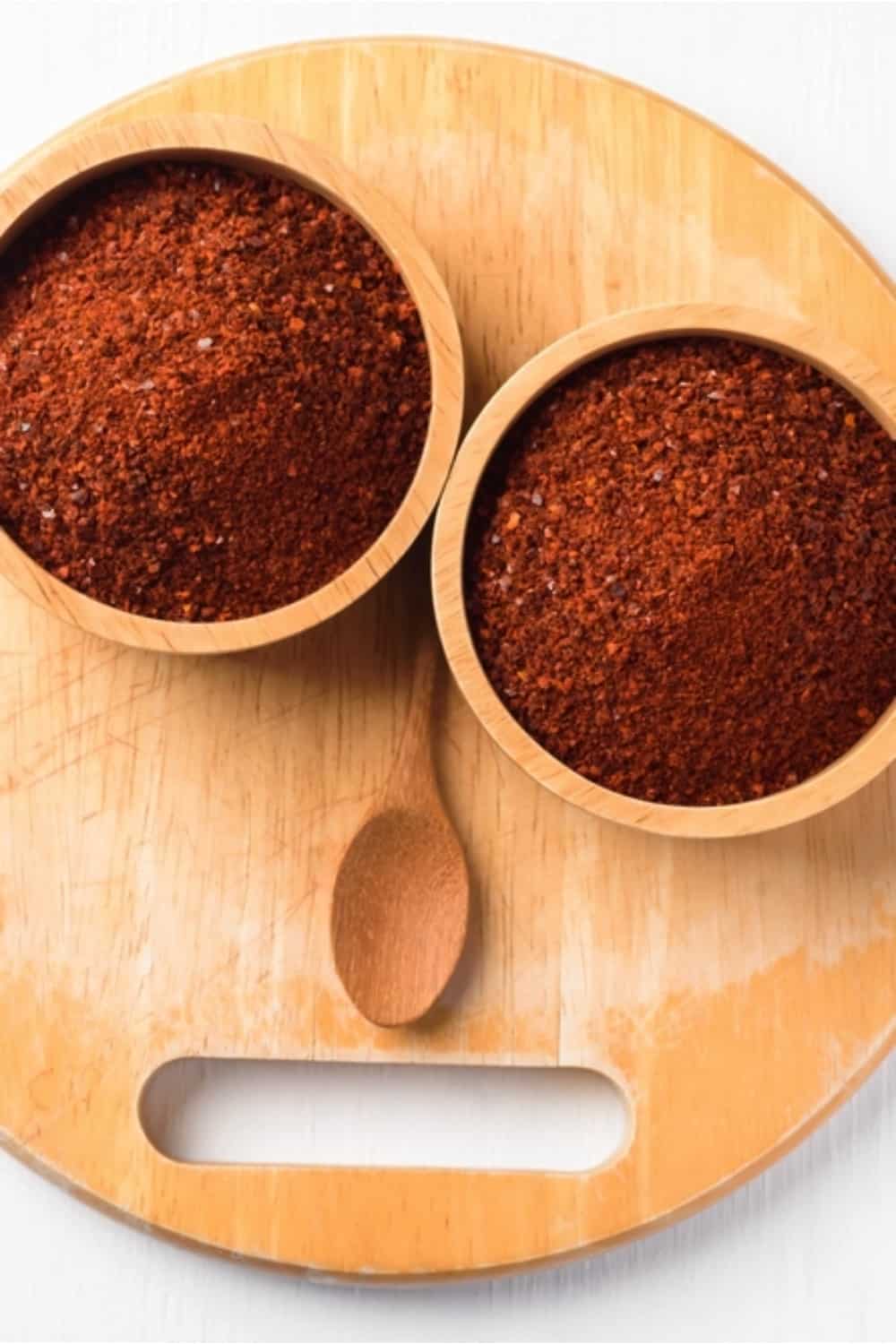
Dried chili peppers can also serve as a good chili oil substitute because they have a similar flavor profile and heat level as chili oil.
Of course, the main problem lies in the texture and consistency because they are very different in these terms. But, that can also be solved in one simple process.
All you have to do is to crush those dried chili peppers to make a fine powder. After that, you must heat the oil with a neutral taste and add the powder to it.
You will have to properly mix the oil and the powder and let it heat until you achieve the desired texture and consistency.
Get rid of the pepper pieces and you will be able to freely use the remaining oil in your desired dishes.
12. Salsa Macha
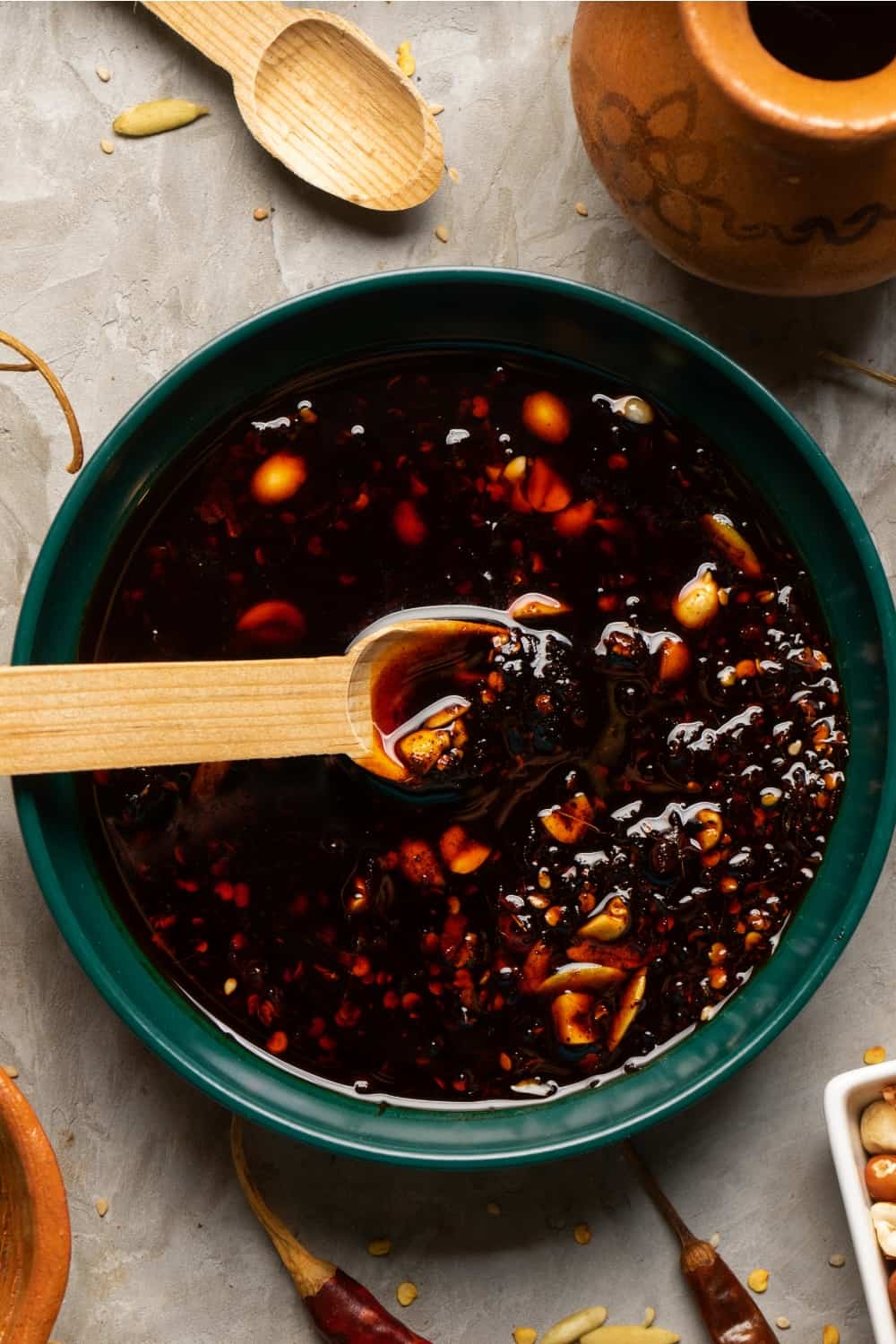
I am sure that most of you hardcore fans of hot and spicy are very much familiar with this one.
Salsa Macha is actually a type of chili oil itself, more precisely the Mexican variety of chili oil. So, it is no surprise that it found its place on this list.
However, there are a few differences between Chinese chili oil and Mexican-style chili oil.
First, although the flavor profiles are quite similar, Salsa Macha has a richer flavor that is quite smoky when compared with ordinary chili oil.
Aside from that, it is a bit spicier and has a denser texture when compared with Chinese chili oil.
Because of all these factors, it is best to use Salsa Macha as a substitute for chili oil to make marinades for meats and savory dishes.
It can also be used as a dipping sauce, as well as in tacos, quesadillas, or burritos.
13. Homemade Chili Oil

Finally, if none of these are available to you at the moment or if you just want to experiment in a kitchen a bit, you can always mix several basic ingredients and make your own culinary masterpiece.
All you have to do is follow the simple instructions explained below.
INGREDIENTS:
• 1 Cup neutral oil (it is best to use canola oil, but using olive oil or peanut oil is not a bad idea either)
• 3 Tbsp of crushed dried chili peppers
• A bit of salt (according to your preference)
INSTRUCTIONS:
1. Find a small pot in your kitchen and add oil, peppers, and salt.
2. Heat it on low to medium heat and stir the mixture continuously for about 5 minutes.
3. Make sure that the oil doesn’t smoke in the cooking process. If you notice that it will happen, remove it from the heat to reduce the temperature.
4. After the suggested time frame, you can freely remove the pot from the heat and cool the mixture.
5. Pour the mixture into a bottle, refrigerate it, and use it within one month.
One more note. It is important to emphasize that this is not the only recipe for chili oil. There are various other recipes with different ingredients, so if you don’t like this one, you can always find the one that suits your preferences.
Final Words About Best Chili Oil Substitutes
All in all, I don’t have too much to say in the end. Everything has been said in the text.
One of these 13 chili oil substitutes will certainly satisfy your needs.
You just need to know what you are looking for and what type of condiment can fulfill the expectations of your dish in terms of flavor, texture, spiciness, and consistency.


